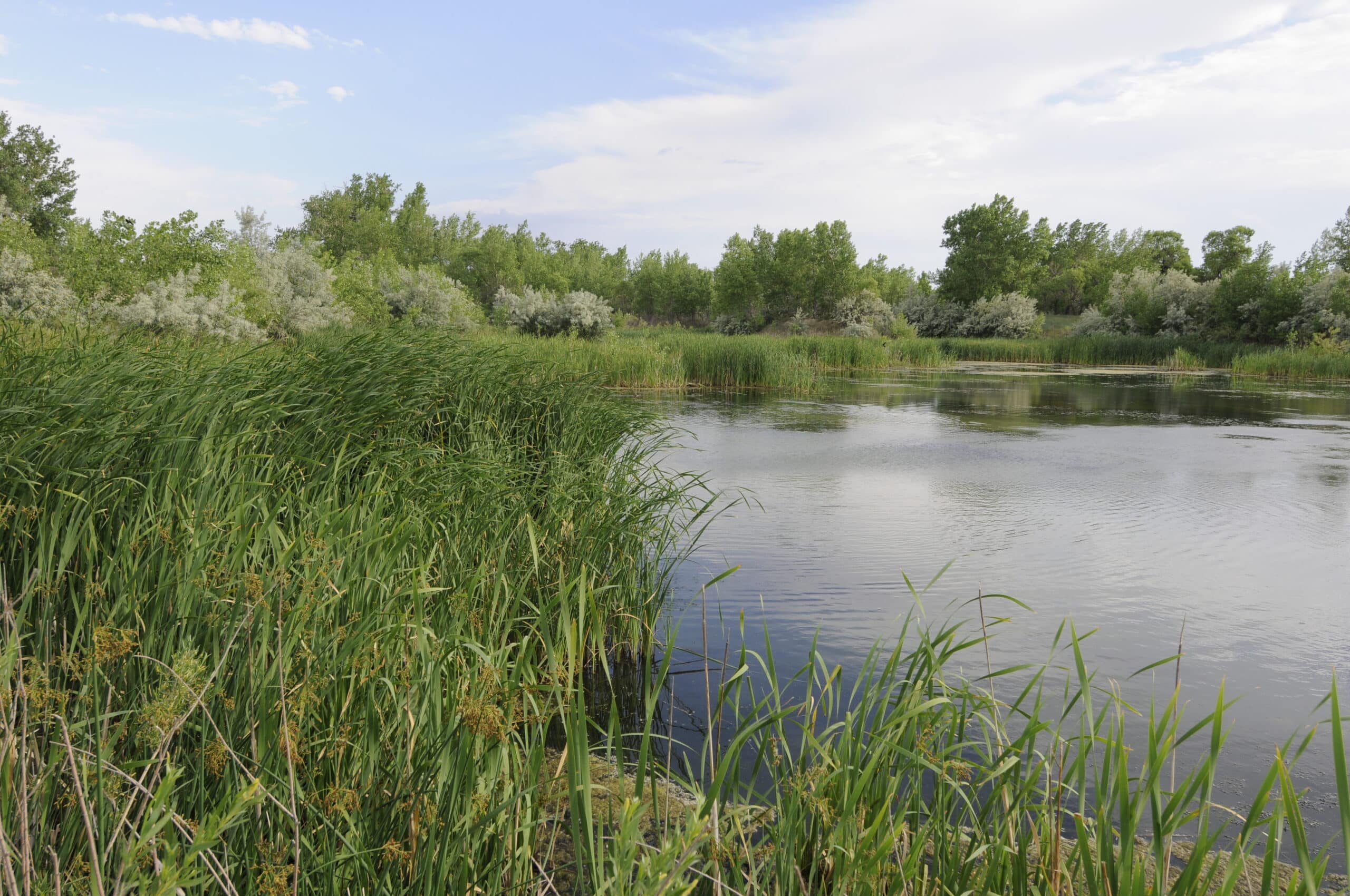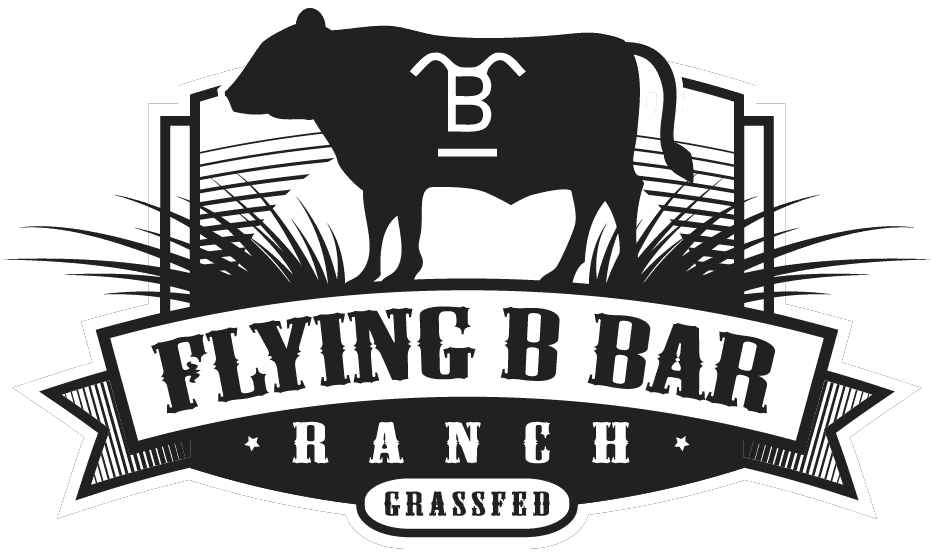A Look Into Our Humane, Grass Fed Cattle Ranch
Flying B Bar Ranch, located in Strasburg, Colorado, raises Angus and Wagyu/Angus cattle, and is the passion pursuit of the Buchanan family; Brad, Margaret, Grace and Will. Our cattle are all grass fed and grass finished, which means they are never fed any soy, grains, or corn.
Most cattle are sent off to a feedlot at about the age of 6-8 months to “finish”, just after they are weaned from their mamas, and are penned up eating nothing but high percentage grain rations, and administered growth hormones and steroids. Cows in nature eat nothing but grass. In fact, their stomachs aren’t even designed to process grains, but it sure will put the weight on quickly. This industrial method can get them to market as early as 12 months old.
At the Flying B, instead of getting in a trailer and heading to the feed bunk after weaning, our cattle head back to the grass pasture, and there they stay until they are ready to come home for dinner. And if the pastures need to be supplemented during the winter, we feed hay farmed mostly right here at the ranch, usually Sorghum/Sudangrass and alfalfa, or hay from farmers we know and trust.
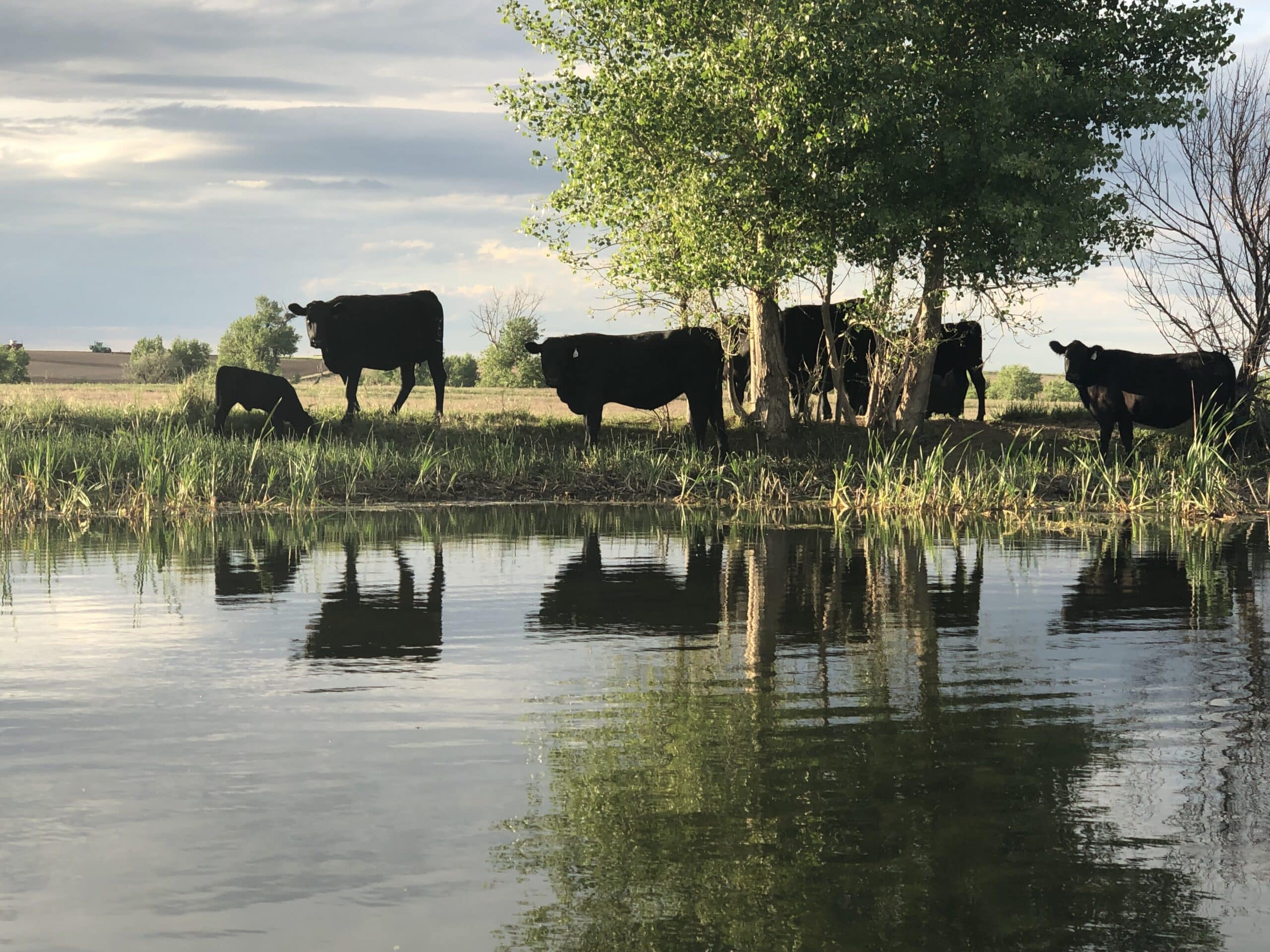
Only the Best for Our Grass Fed Cattle
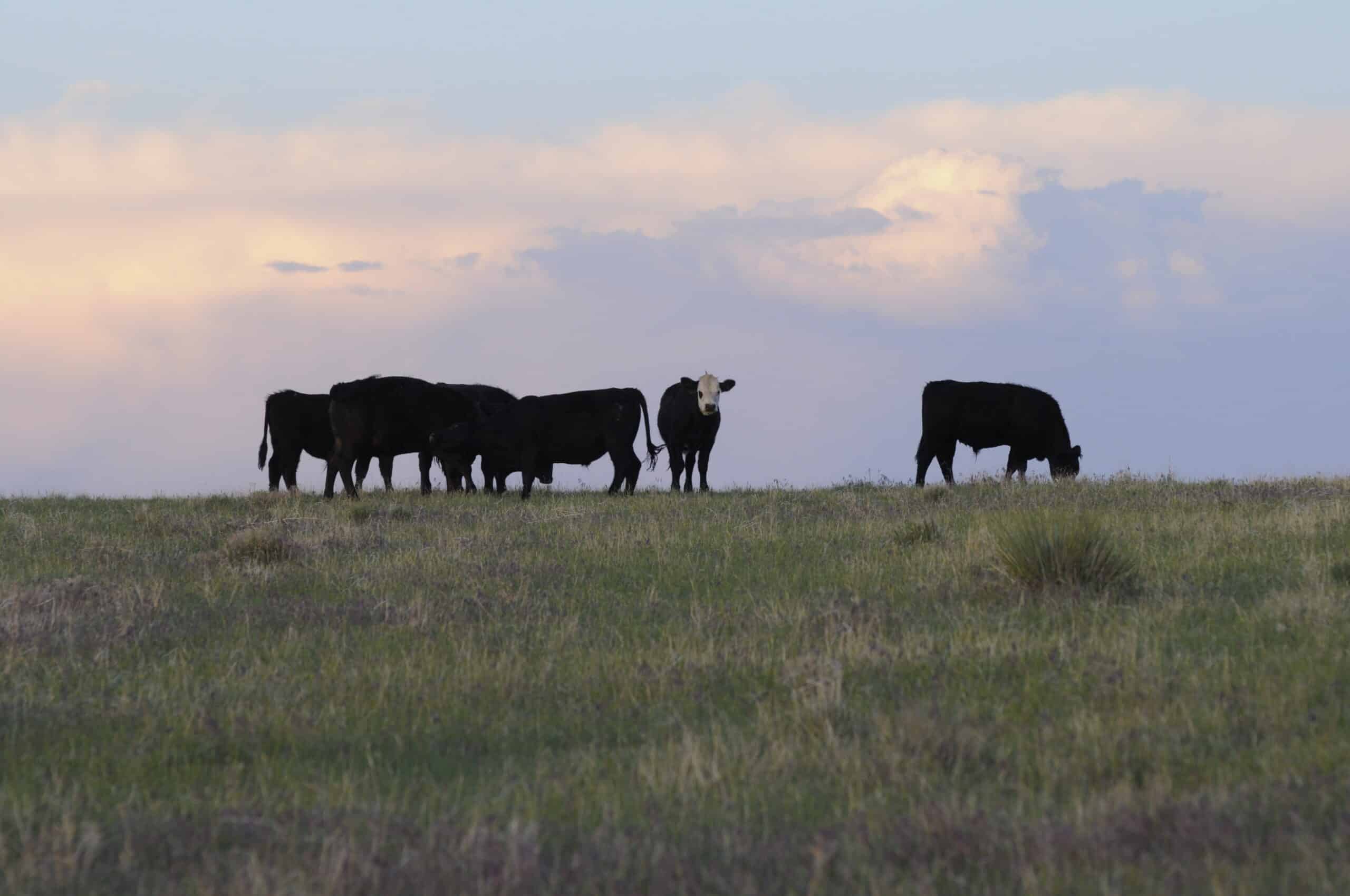
Our cattle never get growth hormones, antibiotics, or steroids. Yes, our approach takes longer than the feedlot approach, 6 to 12 months longer, but good things take time. Our cattle live a much more content life, just like us, and they get to hang out at the ranch getting the first class treatment that an animal only gets if it is cared for by my wife, Margaret. Margaret does animal massage, acupressure and Reiki for horses, dogs, and yes, our cows! Heck, in Japan, Kobe beef is a delicacy and they get massaged too! Many friends of ours have commented that it is their fervent hope to come back in their next life as one of Margaret’s animals.
But we also won’t let our animals suffer. So, if a cow, heifer or steer needs treatment, they get it. We track any animals who receive any treatments and they are pulled from our certified program so you can be sure that the beef you get is free of any antibiotics, steroids or added hormones. That said, since our animals live their entire lives on pasture, we rarely see health issues with our animals.
We raise Angus and Wagyu/Angus cross cattle. This successful cross breeding produces our famous “Colorado Kobe” beef. Wagyu produces the best tenderness and marbling in the world, and combined with the genetics of American Angus produces a perfectly built heifer or steer that thrives on grass and finishes out perfectly.
Compare that with the meat you’ll find on grocery store shelves.
Most meat in your local supermarket comes from facilities called “Confined/Concentrated Animal Feeding Operations” or CAFOs. The purpose of a CAFO is to quickly produce large quantities of inexpensive meat. While the meat is available year-round at a low price, we are starting to recognize many of the consequences directly linked to factory farming, such as:
- Stressful and abusive environments for animals
- Feeding unnatural and stressful diets to animals
- Animals may travel long distances from ranch to feedlot to slaughter
- Processed by multinational meat packers
- Unsanitary slaughter practices – Trusting conglomerates to inspect themselves (HACCP)
- Maximum use of hormones, steroids, beta agonists, sub-therapeutic antibiotics
- Reduced tenderness and quality
- 1 lb. of ground beef may include meat from thousands of animals
- May be sourced from several foreign countries
- Typically 12% solution added with Modified Atmospheric Packaging (MAP)
- May contain water, beef flavoring, flavor enhancers, preservatives, etc.
- May contain Advanced Meat Recovery (AMR) like Lean Finely Textured Beef (LFTB aka Pink Slime)
- Detrimental environmental effects and pollution
While in the CAFOs, cows are typically fed a diet of grain, soy, and corn. This is an unnatural food source for cows who are supposed to eat fibrous grass and plants. Switching to high starch, low-fiber diets commonly causes disorders, including a condition called “subacute acidosis” where cows develop diarrhea, stop eating their feed, kick at their bellies, and eat dirt.
As with everything, there are some upstanding and honest feedlots and there are others that abuse and mistreat their cattle.
In contrast, our cows spend their entire lives in wide open pastures. They eat grass—the food that they were naturally intended to eat, in the environment where they are naturally found. Because of their low-stress lifestyle, our cows are rarely sick, and grow at a natural rate. The result is the most nutritious, best tasting beef for you and your family.
Conservation & the Environment
So why is everyone talking about Grass Fed Beef?
We talk a lot about our grass fed and grass finished beef. It’s the entire reason we created Flying B Bar Ranch 17 years ago: to provide quality beef raised in harmony with nature, to restore the natural ecosystem of the eastern plains of Colorado, and to use innovative regenerative practices that reduce our carbon footprint while improving animal and soil health.
But what does grass fed and finished mean?
Today, most beef and pork comes from industrial agricultural operations that rely on confined feeding in feedlots. Feeding animals that way requires antibiotics, steroids, and added hormones to accelerate the pace of weight gain on the animals and puts addressing climate change, animal welfare, and creating nutrient dense protein at the very bottom of the list. These industrial systems focus on getting cows to their finish weight as fast as possible. Just because it’s the quickest way doesn’t mean it’s the best way to raise our cattle and feed families across the world; we can and should do better.
At Flying B Bar Ranch, our cattle are 100% grass fed and finished. This means no grains, corn, or soy, ever, during their entire lives, and we never use hormones, antibiotics, or steroids. They get nothing but grass and sunshine, while roaming on thousands of acres of natural prairie grasses. We use holistically planned grazing, utilizing rotational and intensive grazing techniques. In short, our cattle are constantly moving from pasture to pasture throughout the year based upon weather, soil and grass conditions. This ensures each pasture the adequate recovery time and keeps cattle moving how they were naturally meant to. This gives our cattle plenty of nutrition, exercise, and grass, while protecting the natural ecosystem from overgrazing and losing nutrients and moisture in the soil. Our cattle walk the land and churn the earth with their hooves, breaking down debris and fertilizing the soil. It’s a million-year-old cycle, but it works. Cattle are THE best tool for conserving and improving soil and grass health if done correctly!
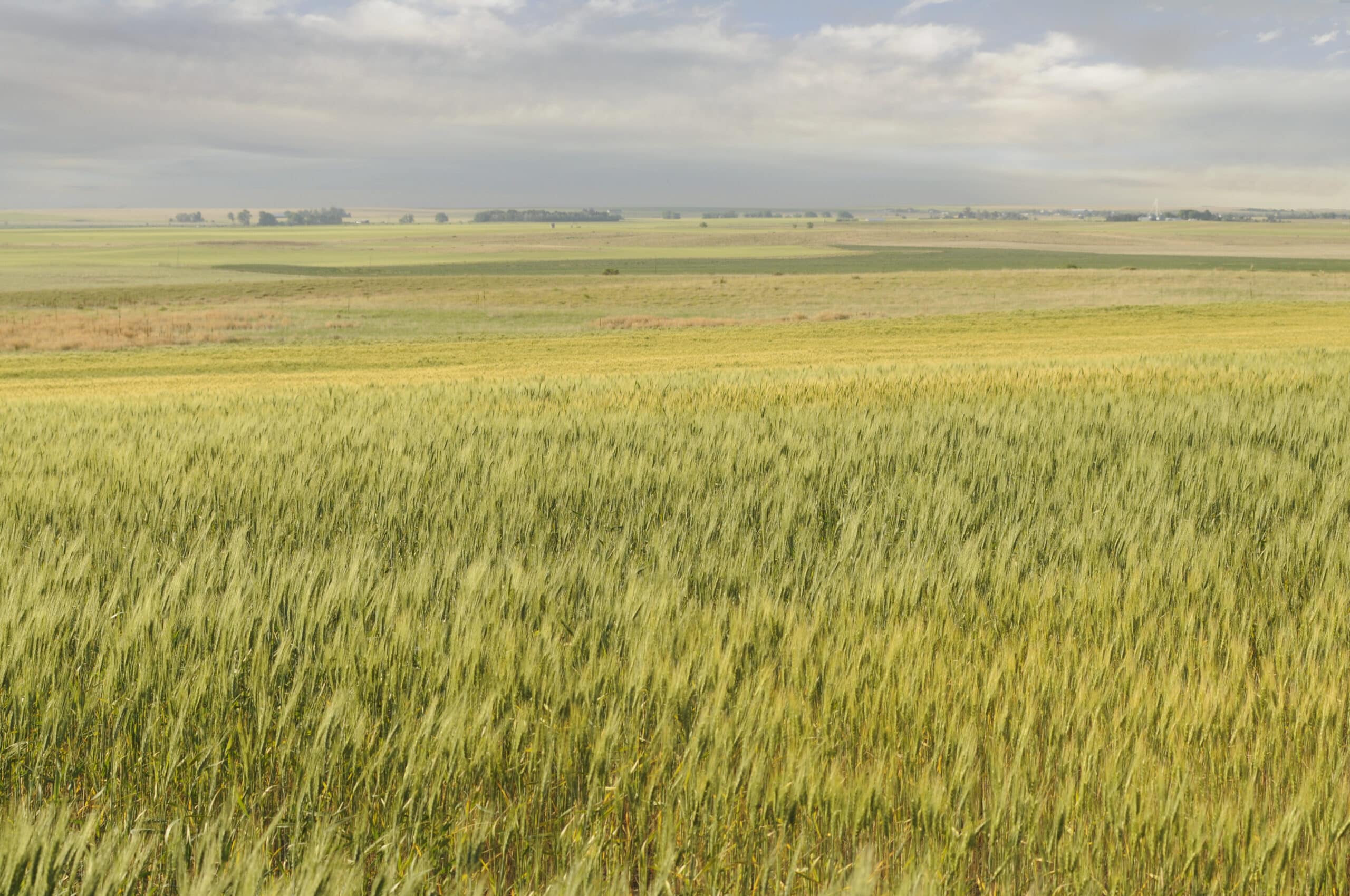
Be wary of “Grass fed – grain finished.”
We proudly proclaim that we never use antibiotics, hormones, or steroids, but the secret is that we don’t need them. Giving our cattle plenty of room to move around, plenty of nutrition from the grass they eat, and plenty of time to be cows means our herds don’t need the chemical and medical intervention that has become common practice among many operations.
Our cows are fed and finished on grass. That’s all they’ll eat their entire lives. In the 17 years since we started Flying B Bar Ranch, more and more consumers have been looking for good beef raised the right way, and the competition has noticed. Now there’s more and more operations offering “grass fed” beef, with a little asterisk that they finish with grain. What does this mean? Sure, their cows ate grass at some point in their lives, but in the last half of it, they were supplemented or completely transitioned to a grain based diet. Often times finished in non-natural confined areas or CAFO’s(confined animal feedlot operations) where daily weight gain can be maximized. Truly grass fed beef doesn’t need feedlots, and it doesn’t need any extra antibiotics, hormones, or steroids. Our cows rarely have any health issues because we allow them the proper space and clean pasture to help them live in the environment they were meant to be in.
Plus finishing is the most important part of cattle ranching! The last few months of a cow’s life determine the flavor, tenderness, and nutrition of the beef that you purchase and feed your family. By finishing on grain, these other operations are throwing away all that hard work they did of starting their cattle on grass, just to try and make a quick and easy buck. Good things take time, and that’s why we take our time to raise our beef the right way.
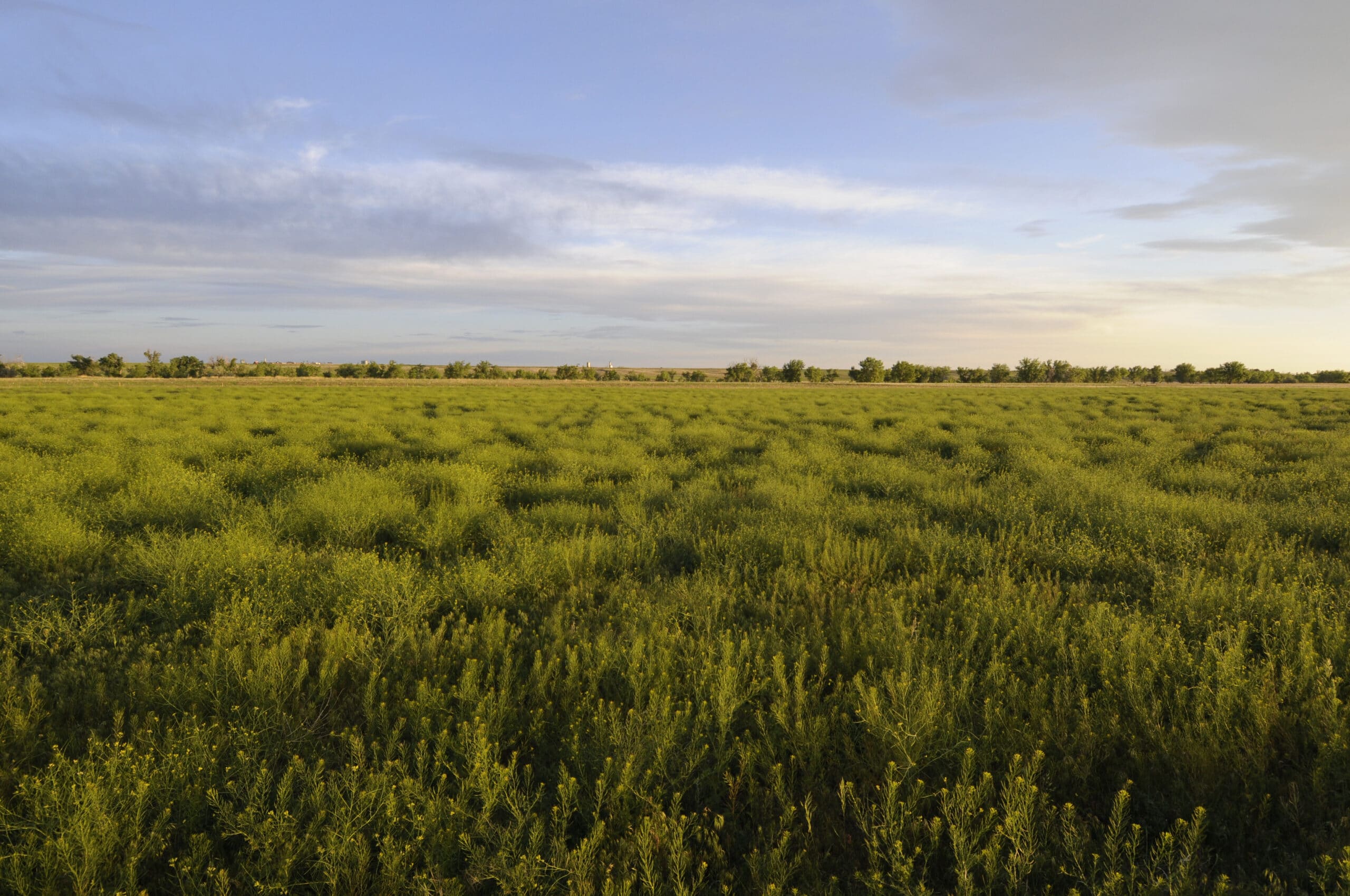
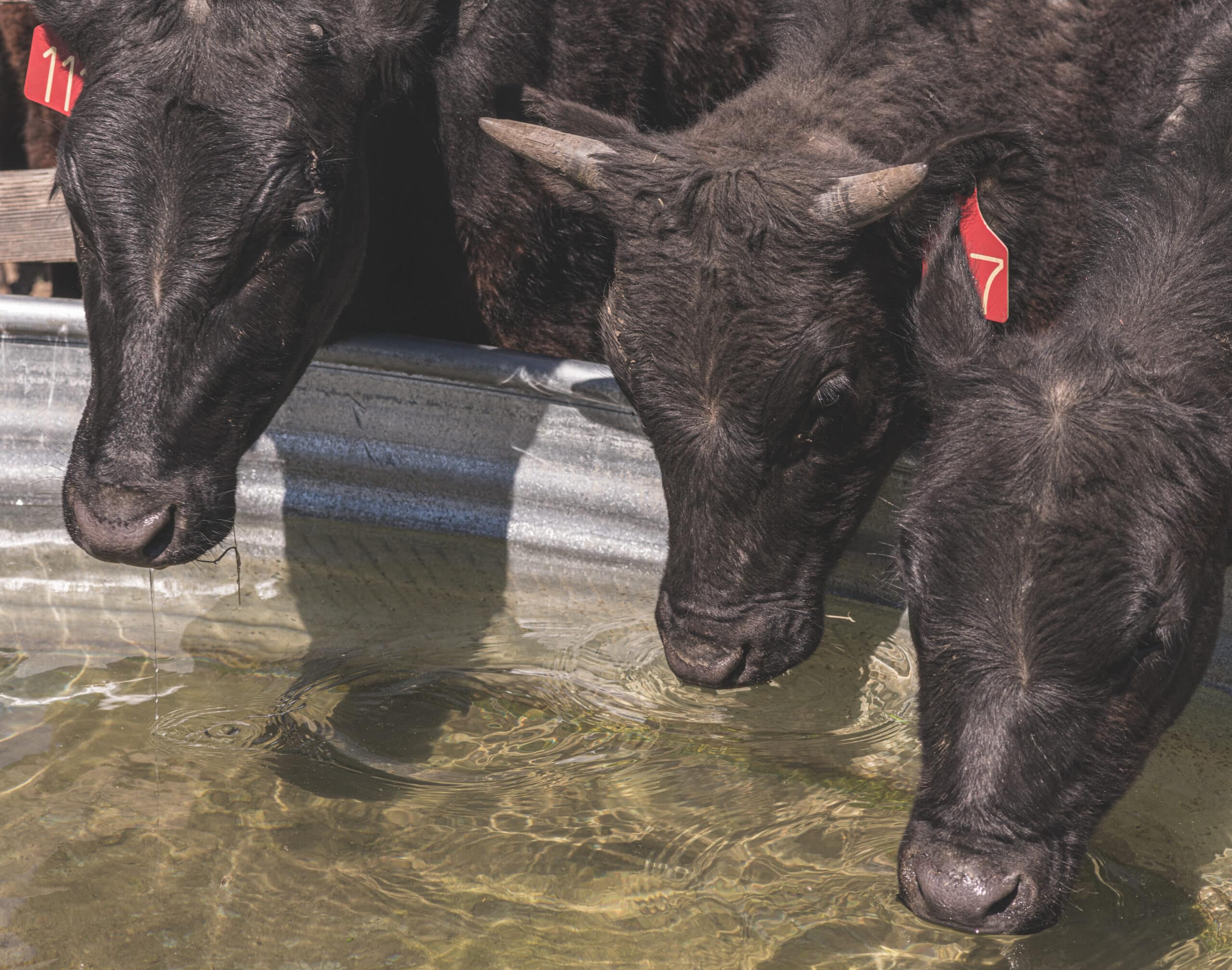
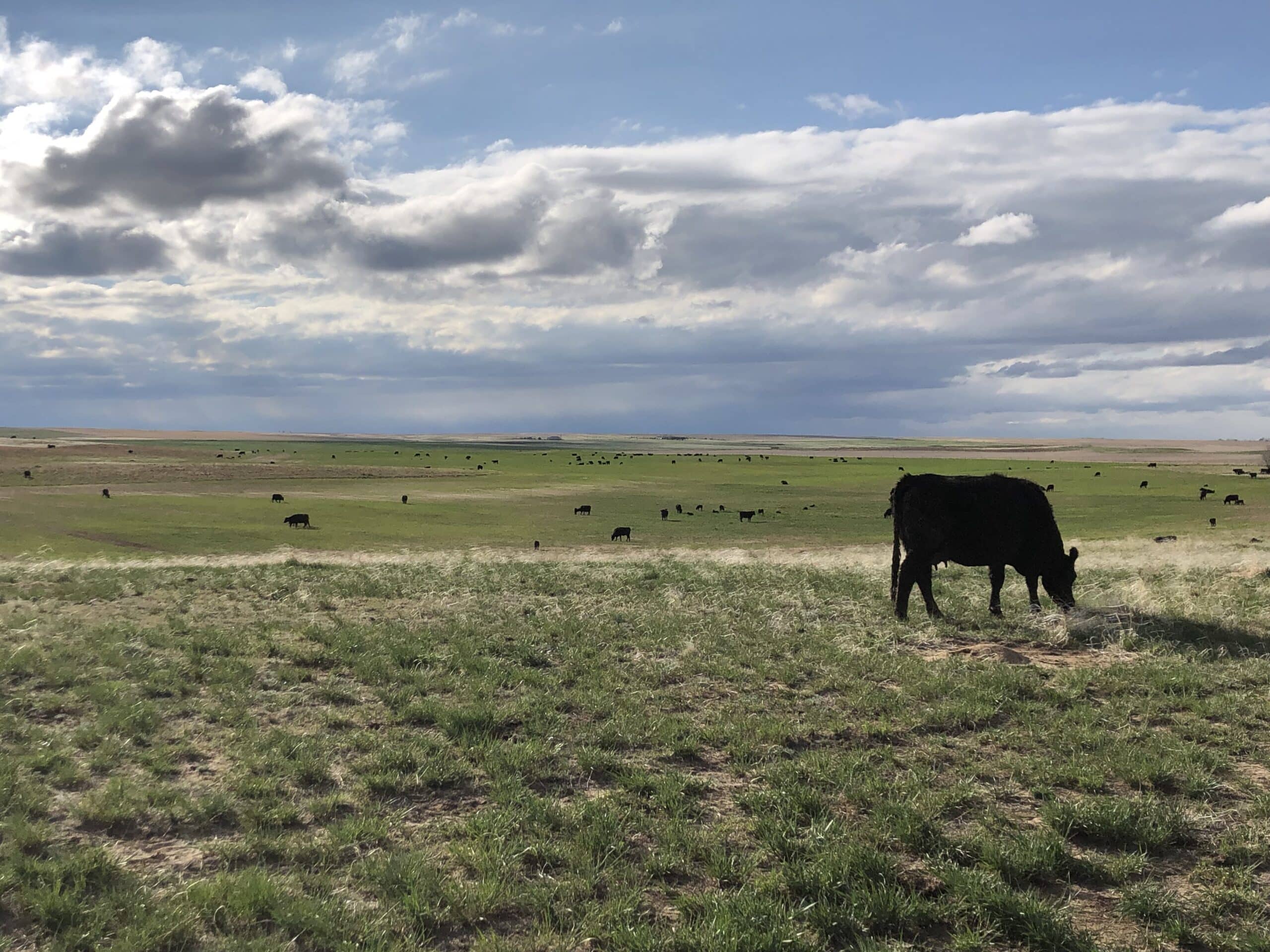
We focus on the soil because that creates better grass, and better grass makes for better cattle and a better planet.
We couldn’t raise our cattle in Colorado without a strong natural ecosystem that protects our soil and gives the native prairies of eastern Colorado the nutrients they need to thrive. We guard our soil and its nutrients by planting cover crops, encouraging native wildlife and birds, and working with the land, rather than against it. That’s why we ranch the way we do; to create a natural balance that nourishes the earth, the cattle, and our customers. The natural prairie grasses of eastern Colorado have evolved over millions of years to be efficient at storing water and carbon in the soil, and our entire operation revolves around giving those grasses every opportunity to succeed. We do this not just because it’s the right thing to do, but because it’s good business too: every year that our pastures can store more water, carbon, and nutrients means that the next year the prairie will be stronger, grow better, and support more of our natural ecosystem. This means we can support more cattle, who can then support more pasture and prairie. It’s a cycle, and we work hard to take care of it.
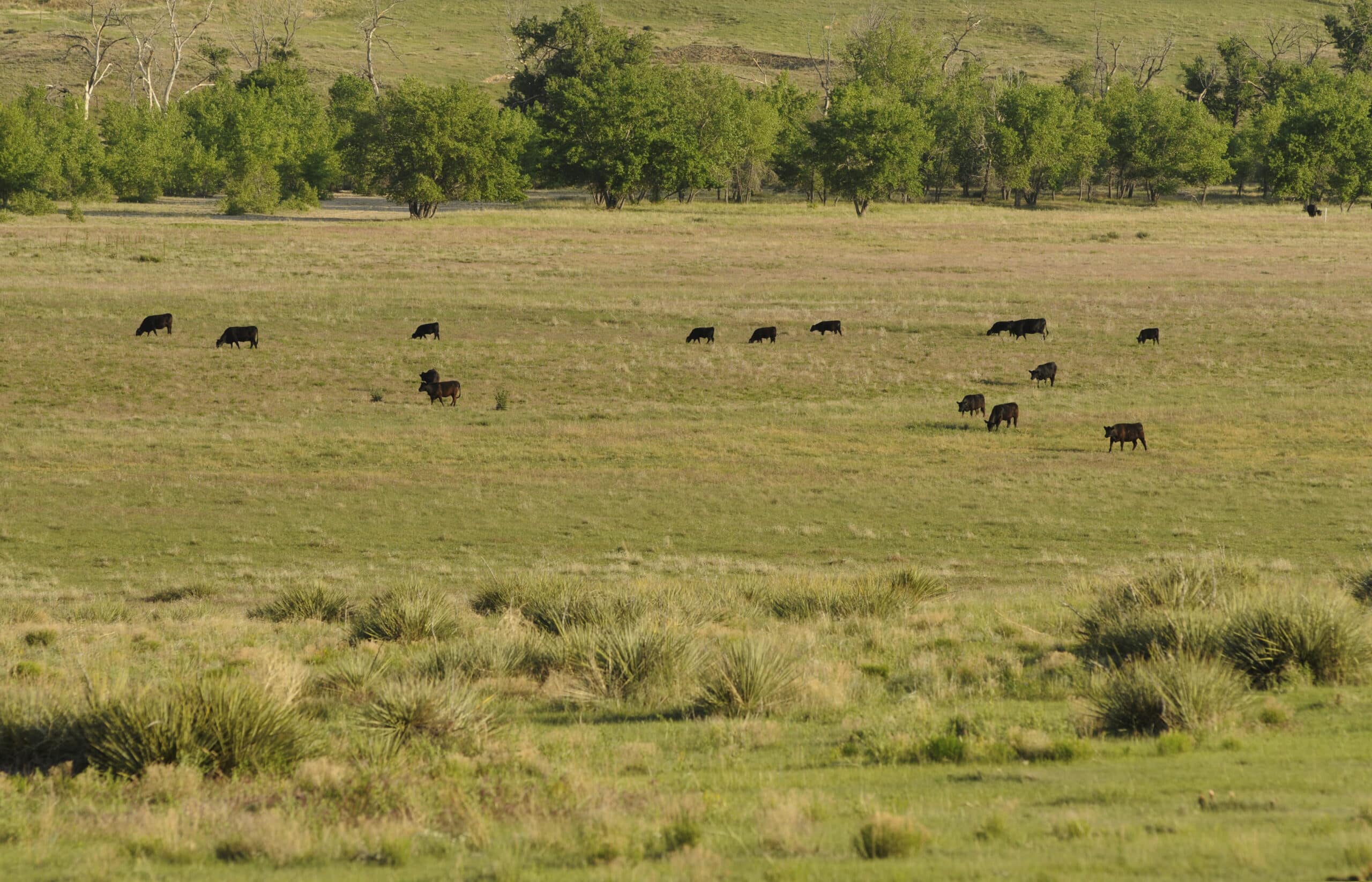

Certified Grass fed
We are certified by the American Grassfed Association as 100% grass fed and finished. Their certification is the gold standard in regenerative ranching, and it means you can buy our beef with confidence that we raised our cattle the right way, rather than the fast way. We give our cattle plenty of room to roam and graze, and plenty of time to be themselves. We stand by our practices, and unlike the Wizard of Oz, we are happy to pull back the curtain and show our customers exactly how we do what we do, and why we do it the way we do it. There’s no secret, it’s just using the methods our ancestors used for thousands of years to raise livestock. Sometimes the best way to move forward is by going back to our roots.
What are the benefits of grass fed?
We raise our beef the grass fed way because it’s the right way, but our approach to ranching means better products on your dinner table. Not only is our beef more tender, with better flavor, but it’s also better nutritionally than grain fed beef. You can serve Flying B Bar beef with confidence that your family is getting better nutrition and gut health!
Conservation
Conservation is a way of life at Flying B Bar Ranch, and it comes naturally. From how we feed our cattle from grass right here at our place rather than trucking them and their feed cross country, to our approach to how we farm, to the way we treat the land, the natural resources, the habitat, the water and the wildlife, everything just works better when you work with nature instead of against it. Our pastures never get any fertilizers, herbicides or chemicals. We work to move our cattle from pasture to pasture whenever the grass tells us to. We use the cattle to control the weeds. For example the eastern plains of Colorado have a type of weed called a Russian Thistle and there is about a 3 week period every year when the cattle like to eat it. Pasture it too early and you miss it, pasture it too late and the cows won’t touch it.
The Kiowa creek bottom is “sub-irrigated” from alluvial water that flows 10 to 20 feet below the surface. Through our ranch this flow of water can be as much as a quarter of a mile wide. And that’s a bonus for us, but the ancient creek bottom and the wide historic path of the creek has left a lot of sand deposited in and below the soil. In some places at the ranch that band of sand is more than 3/4 of a mile in width! In these areas we can’t farm because it just “stirs” up the sand and so we pasture those areas carefully, watching and timing the weeds and not over pasturing it. It’s taken some time to notice these things and to learn their importance, and you can spend a lifetime learning here. That’s the beauty of the place.
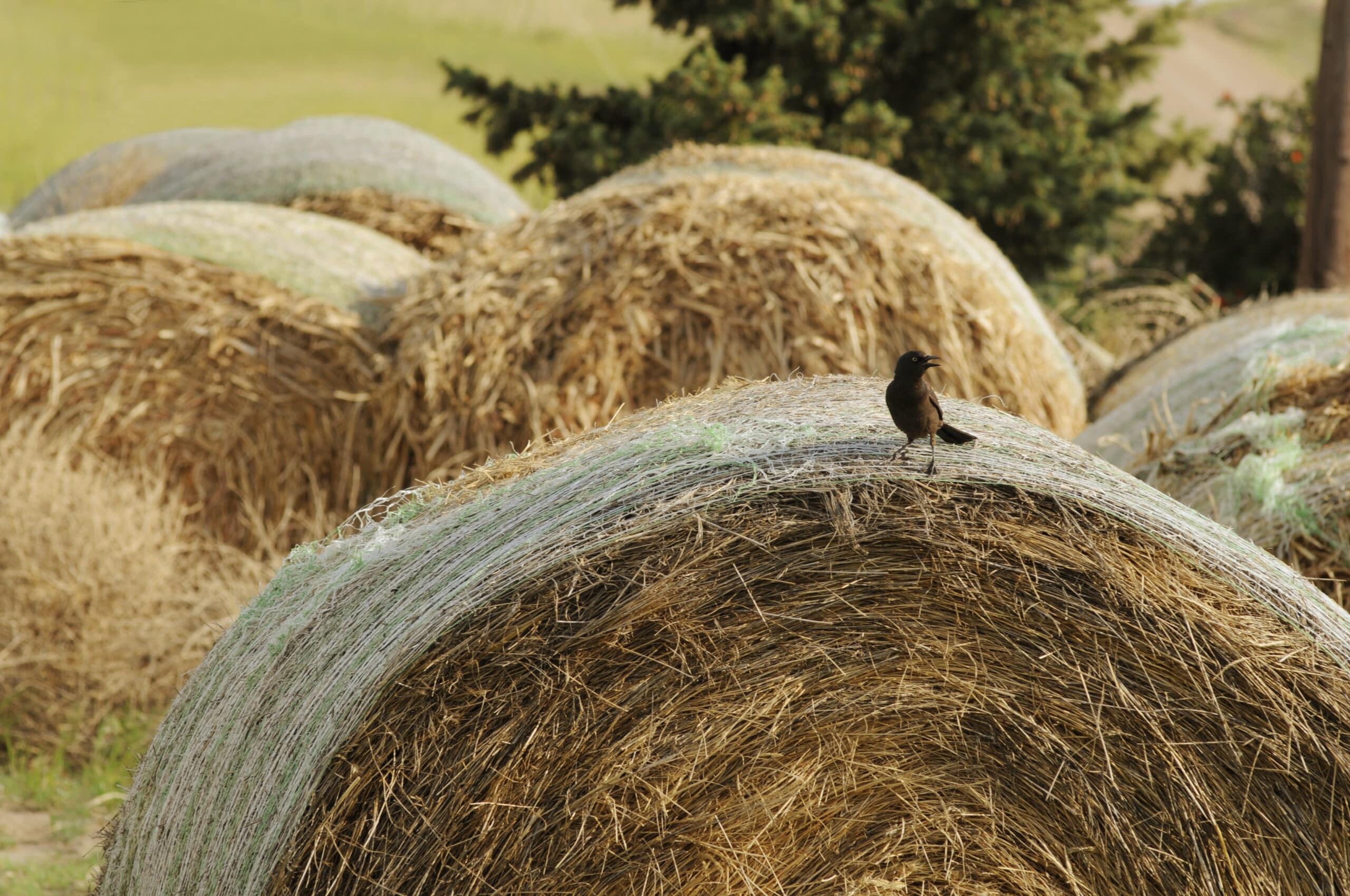
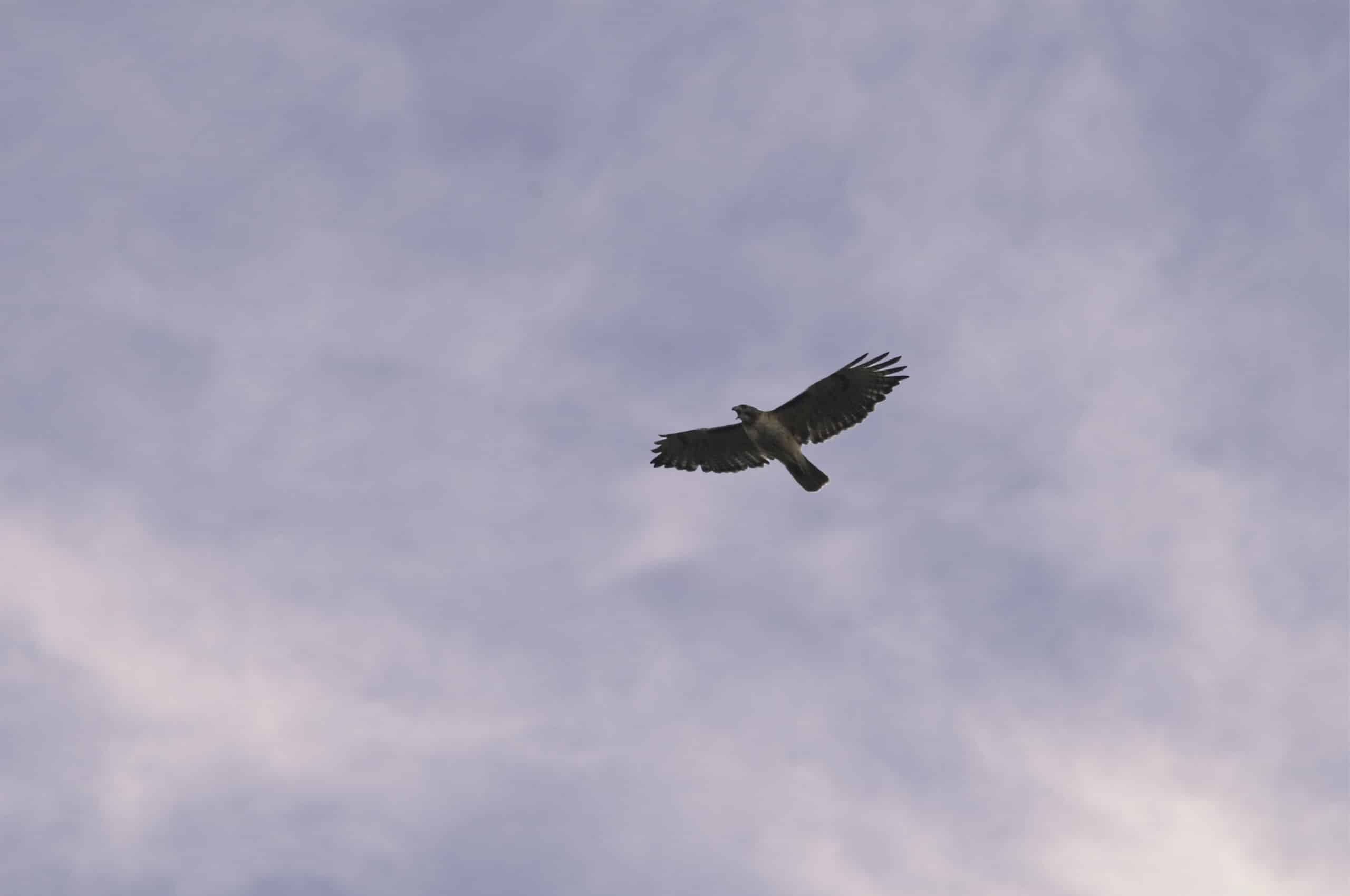
The 4 ponds at the ranch are an extremely valuable asset to the habitat. The Kiowa Creek is a seasonal creek that may run only a few months each year and many years not at all. Because of that, our year round water sources are a major resource for the wildlife and create all kinds of habitat for protection, rearing broods each year, and providing a wide variety of food sources. When you provide food, water, and protection the wildlife will find it and use it, and use it well.
We also have a healthy selection of fish in two of the ponds, they span over 4 acres and one is 15 feet deep. They hold Donaldson Steelhead, Rainbow Trout, Large Mouth Bass, Small Mouth Bass and Blue Gill, and they all have done very well there. And they’re a blast to catch too, just ask the eagles!
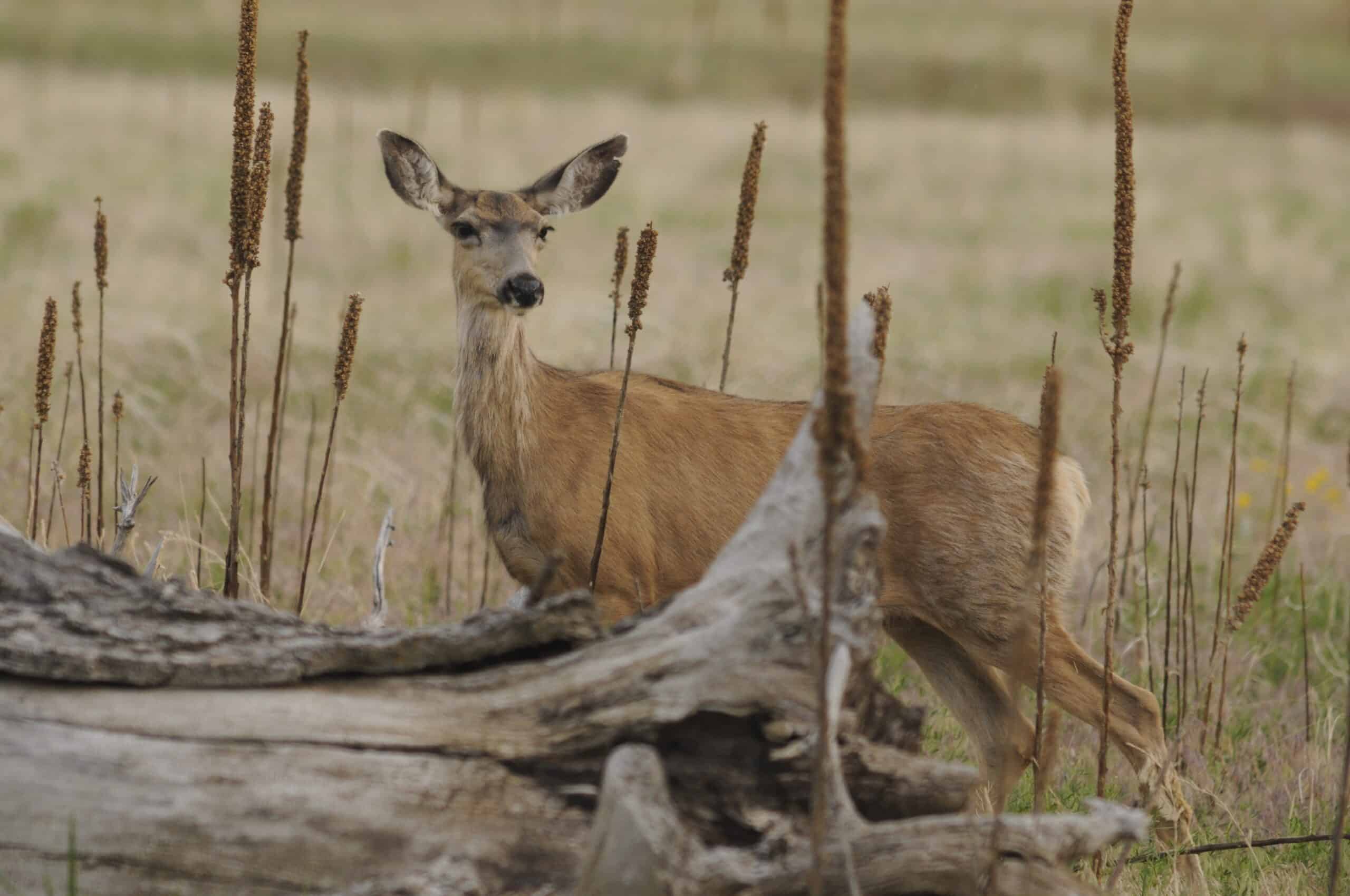
The wildlife at the ranch is abundant and amazing. and the 4 separate ponds we have on the ranch draw every type of wildlife: deer, turkeys, coyotes, ducks, geese, SandHill Cranes and more. We even have 2 bald eagles living and nesting here each year! It’s tough sometimes to see them snag one of the Steelhead, Rainbow Trout or Bass out of one of the ponds, but it’s a small price to pay to provide that kind of habitat for them. We also have badgers, they generally help us keep the prairie dogs that occasionally try and take up residence, or the pocket gophers, a small mole-like digger that can really mess up an alfalfa field. The birds are amazing, the eagles, hawks, and great horned owls all love the riparian creek bottom habitat and keep the field mouse population in check. We have to keep an eye on the barn cats though because the eagles can snag them with no problem at all.
In 2006 and again in 2015 we put a conservation easement with Colorado Opens Land Trust on a portion of the ranch that isn’t in the flood plain and we’re proud to be a part of protecting the native grasslands that still exist on much of the ranch. The conservation easement prohibits any development of that land in perpetuity and we feel that is important as development moving east from Denver threatens the grassland habitat around Strasburg and Bennett, in fact just one mile east of the ranch there has been an area slated for over 150 homes on small lots. Development is part of the price we pay being so close to Denver, less than 40 minutes to Downtown. So little of the native grasses still exist on the eastern plains because the ground is so valuable for wheat and corn farming. In 2007 we returned a 25 acre patch back to grass from alfalfa and decided to replant to native grasses, it takes longer, and costs more but it’s worth it. Within 4 years it became an amazing grass pasture that does so well on the relatively limited moisture that we get in eastern Colorado. That’s because the native grass species like crested wheat, western wheat grass, sideoats grama, blue grama, prairie junegrass, little bluestem, needle and thread, and green needlegrass all know exactly what to do and when to do it. These native species are the ultimate conservationists using the valuable water they get to its maximum utility, while spreading deep roots, sequestering moisture and carbon in the soil.
